Idea by
Simona Serafino
Call for ideas 2017
Future Proof City Streets
Future Proof City Streets
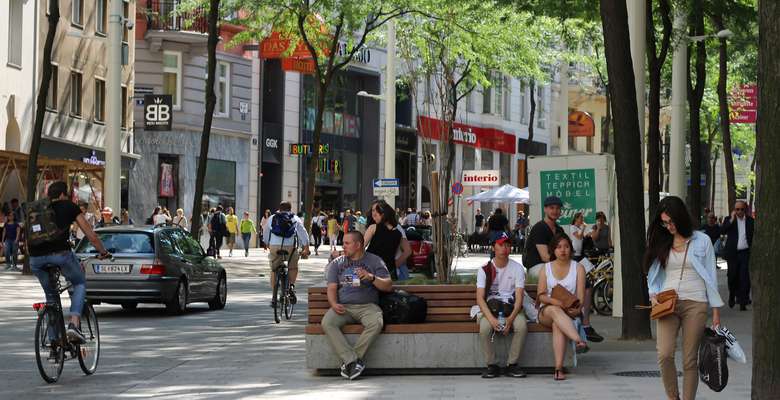
Imagine your city in the near future. In the best case scenario, it is welcoming, healthy and enterprising. The streets are inviting, the air is clean. The city is a melting pot of culture and technology. To make all this possible, great streets are needed.
Future proof streets are composed of:
- Space to move from A to B safely and comfortably in a world where car dominance is subsiding. This calls for a rearrangement of traffic.
- Space to act: The place where we meet different kind of people and learn from them. By mixing different public and semi public domains, the street can stage the confrontation between different subcultures.
- Space to identify. Globalization means that the different parts of the world are becoming very similar. Architecture and public space can make a difference. They tell the history of the city and shape the memory of the community. Designing with local identity means craftsmanship in details and materials.

Historically city traffic has always been diverse: people moved around in various manners. This mixture resulted in vibrancy, public safety and efficient use of available space. During the course of the twentieth century cars became more and more dominant. Pedestrians and cyclists became marginal. Today we are witnessing an new transition in mobility. Slowly but surely people are getting out of their cars and are starting to walk bike, or trolley around town.
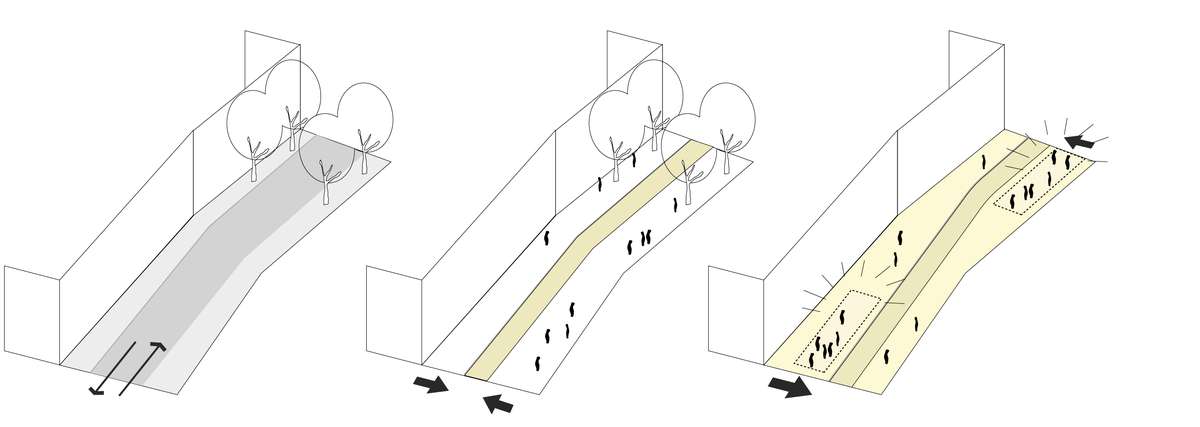
To facilitate the mobility transition, alternatives to driving a car must be stimulated. This calls for adjustments of the urban structure and reorganization of functions. The balance between different types of traffic needs to be restored in the street profile: More space for pedestrians and bikes, less room for cars.
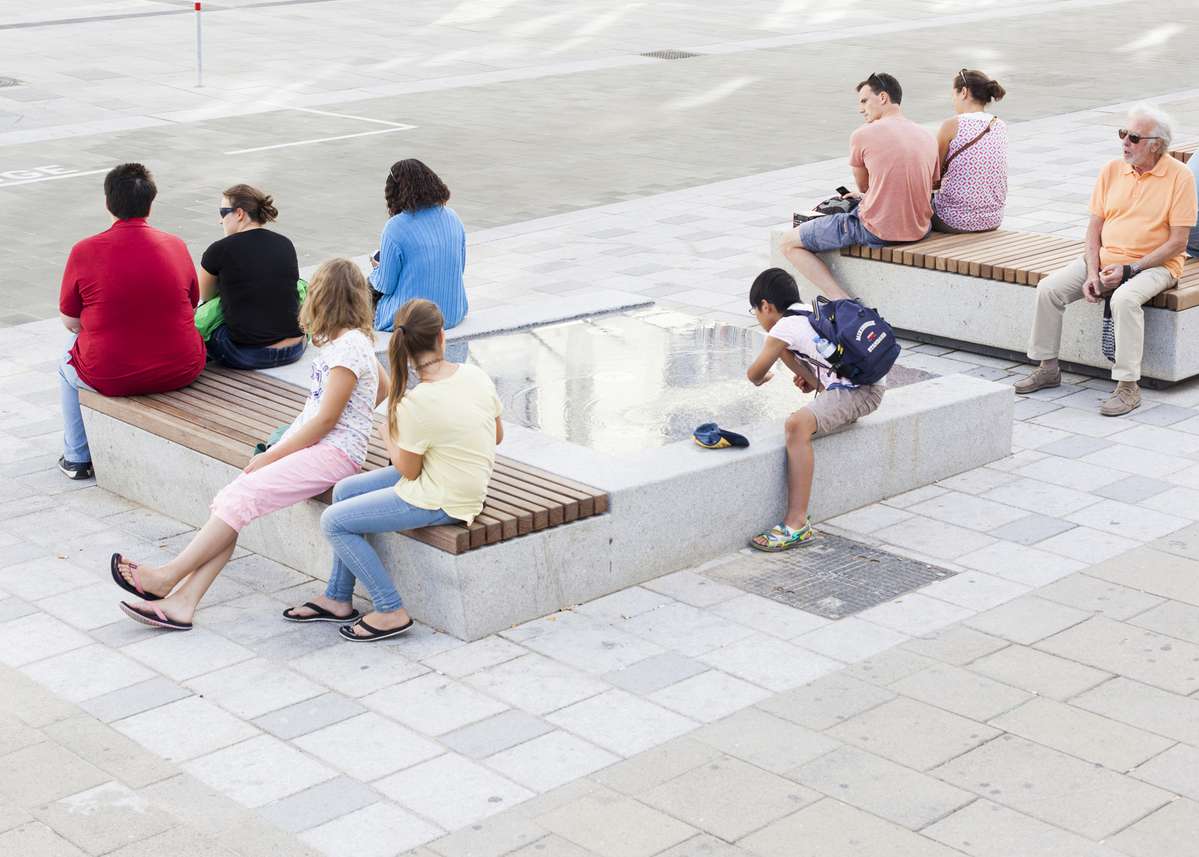
People do many different things in streets, from very functional activities such as go to the grocery, to very social activities such as sitting in a café. In today’s network society, public space is becoming more and more branded for specific sub-cultures. We hardly meet ‘the Others’ any more. Confrontation with other subcultures is important for a healthy society: It promotes tolerance and creates cultural cross-pollination.

By strategically mixing public ‘City Lounges’ among the semi-public domains of shops and cafés, the street can offer the possibility to be confronted with different kinds of people. We don’t have to become friends with everybody; just seeing each other in day to day life is enough. By mixing different public and semi public domains, the street can offer the possibility to be confronted with different kinds of people.

When public space is constructed with local materials, the identity of the city is enhanced. The Mariahilfer Strasse in Vienna is paved with local granite. Street furniture is made of the same stone. This gives the street a couleur locale, despite the dominance of international retail chains.
Future Proof City Streets
Future Proof City Streets

Imagine your city in the near future. In the best case scenario, it is welcoming, healthy and enterprising. The streets are inviting, the air is clean. The city is a melting pot of culture and technology. To make all this possible, great streets are needed.
Future proof streets are composed of:
- Space to move from A to B safely and comfortably in a world where car dominance is subsiding. This calls for a rearrangement of traffic.
- Space to act: The place where we meet different kind of people and learn from them. By mixing different public and semi public domains, the street can stage the confrontation between different subcultures.
- Space to identify. Globalization means that the different parts of the world are becoming very similar. Architecture and public space can make a difference. They tell the history of the city and shape the memory of the community. Designing with local identity means craftsmanship in details and materials.

Historically city traffic has always been diverse: people moved around in various manners. This mixture resulted in vibrancy, public safety and efficient use of available space. During the course of the twentieth century cars became more and more dominant. Pedestrians and cyclists became marginal. Today we are witnessing an new transition in mobility. Slowly but surely people are getting out of their cars and are starting to walk bike, or trolley around town.
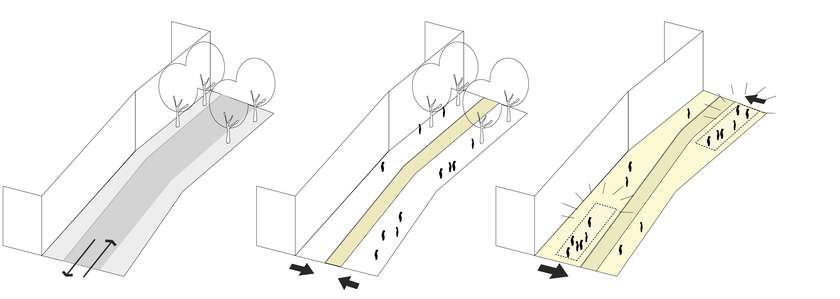
To facilitate the mobility transition, alternatives to driving a car must be stimulated. This calls for adjustments of the urban structure and reorganization of functions. The balance between different types of traffic needs to be restored in the street profile: More space for pedestrians and bikes, less room for cars.
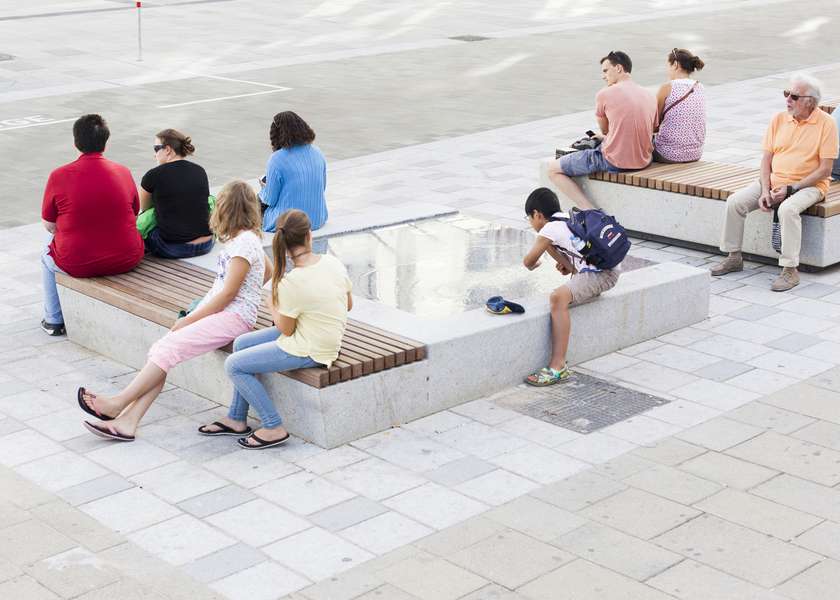
People do many different things in streets, from very functional activities such as go to the grocery, to very social activities such as sitting in a café. In today’s network society, public space is becoming more and more branded for specific sub-cultures. We hardly meet ‘the Others’ any more. Confrontation with other subcultures is important for a healthy society: It promotes tolerance and creates cultural cross-pollination.

By strategically mixing public ‘City Lounges’ among the semi-public domains of shops and cafés, the street can offer the possibility to be confronted with different kinds of people. We don’t have to become friends with everybody; just seeing each other in day to day life is enough. By mixing different public and semi public domains, the street can offer the possibility to be confronted with different kinds of people.

When public space is constructed with local materials, the identity of the city is enhanced. The Mariahilfer Strasse in Vienna is paved with local granite. Street furniture is made of the same stone. This gives the street a couleur locale, despite the dominance of international retail chains.